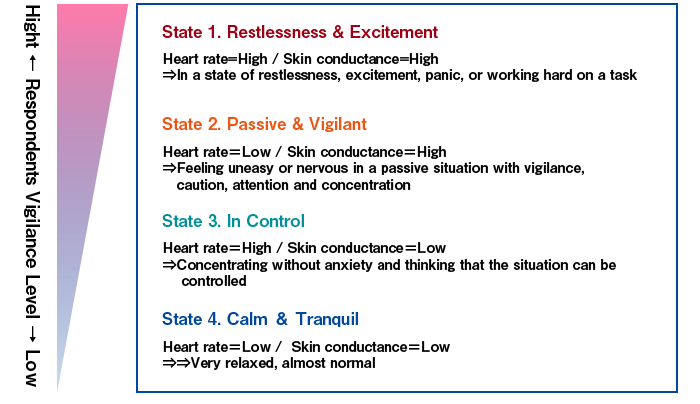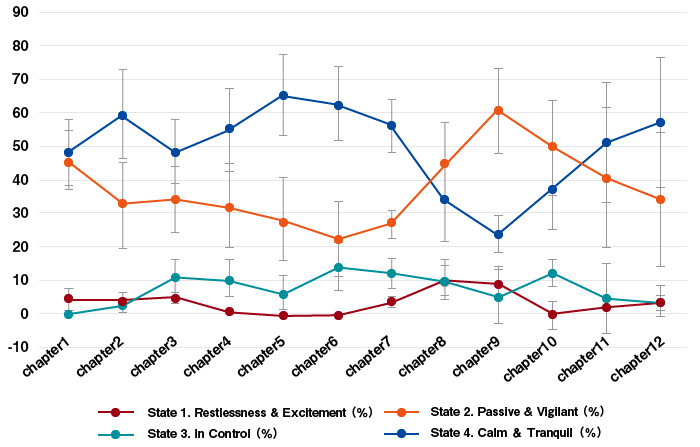The challenge
CAPCOM Co., Ltd. (hereinafter, Capcom) is a gaming software manufacturer headquartered in Osaka. Since its foundation in 1983, it has created many brands of home video games, both targeted for a domestic and global market, developed through its world-class technical capabilities. In recent years, the gaming market has globalized as a result of the connectivity of game consoles and the use of PCs for gaming. In particular, the Resident Evil series, which boasts a cumulative sales volume of 95 million copies (as of December 31, 2019), is one of the company’s main titles.
Neuro research was used for the first time in pre-launch marketing research for Resident Evil 3 *1. Having been released on April 3, 2020, the shipment exceeded 2 million units worldwide five days following release *2. The survival horror game uses weapons and other items for a desperate escape. It is a remake of the global best-seller Resident Evil 3 : Nemesis which was originally released in 1999.

Resident Evil 3, released on April 3 2020
As the gaming market expands year-on-year, competition is intensifying. Since the early days of gaming, the entertainment industry has diversified, and it is no longer guaranteed that famous brands will continue to enjoy sales successes with their new launches. Today there are many games available that, like Resident Evil, are horror themed and feature zombies. To create a successful game, it is necessary to understand the user with accurate insight, and to promote the core values and concepts of the brand.
With this in mind, the goal of this new game was to maximize the sense of survival and horror and integrate them - the core concepts of the series - into the game to provide an exceptional user-experience.
During concept development, Capcom has always relied on game developers’ experience to ensure new games succeed. To check whether the game is designed in accordance with the concept, and whether the core values of the brand are harmed, they conduct a pre-launch survey, known as a concept acceptance survey, which is a combination of test play in campaign mode and player interviews, at a global scale.
Although Capcom will continue to use this approach, there is a concern that insights can be misleading due to the limited number of test players. So to develop its marketing, Capcom wanted to maximize the attractiveness of the core concept to create a route chosen by users that combined the insights derived from technology-based data-driven marketing, while retaining the conventional testing method.
So Macromill conducted a concept acceptance survey for Resident Evil 3, utilizing our neuro research method in Los Angeles, where the game has the largest overall share. This was carried out in addition to the existing concept acceptance survey *3.
*1 The game title for Japanese version is Biohazard RE:3
*2 “Resident Evil 3 Ships 2 Million Units Five Days After Release”
http://www.capcom.co.jp/ir/english/news/html/e200413.html
*3 The concept acceptance survey for this game was also conducted simultaneously during the same period in Japan and the UK by a combination of test play and group interviews. In the United States, individual interviews were conducted after neuro research, although the results of the interview and the correlation between these two results are not mentioned in this case.
The approach
In this neuro research, the heart rate and the skin conductance (electrodermal response) was quantified to measure excitement and vigilance of the autonomic nervous system that controls a person’s immediate response. This data helps us to understand how the core concepts of the game, survival and horror, are received by respondents (players). For example, the change of heart rate shows such senses as excitement / stress / relaxation, while the change in skin conductance shows tension / surprise / stress respectively.
To accommodate for the difference in the time required to complete the game depending on an individual’s gaming skills, and to avoid the stress of wearing measurement equipment for long periods of time, we used the campaign mode of Resident Evil 3 for the test. The game was divided into 12 chapters, and we analyzed the average heart rate and skin conductance for each chapter *4.

<Survey Scenery>
With the quantitative research collected, we turned to Associate Professor Nagano (Physiological & Psychology) of Bunkyo Gakuin University, to interpret the various reactions observed during play, which were used on a physiological-psychological response model *5. Specifically, based on his advice and previous research on how the scores for heart rate and skin conductance increased, we classified the psychological state during play into four categories as below.

<Figure 1. Classification of Psychological State>
In a game like Resident Evil that allows you to experience survival and horror, it can be said that when a respondent is in "Restlessness & Excitement" (State 1), a strong sense of fear and restlessness is felt. The heart rate and skin conductance are higher than normal because respondents are experiencing panic or trying to take full advantage of their vital abilities. In “Passive & Vigilant” (State 2), where the skin conductance increases and the heart rate decreases, it is considered that a respondent is feeling alert and concentrating on playing *6. In addition, when respondents feel they can control things, the heart rate is likely to rise, but the skin conductance is relatively low. Therefore “In Control” (State 3) can be interpreted as clearing the task calmly without anxiety. Finally, in "Calm & Tranquil" (State 4), where neither the heart rate nor the skin conductance increases, the respondent is almost in a normal state.
*4 If an in-game player dies during the game, the chapter is determined to be ongoing. In this analysis, the average value of the physiological index measurement until the next chapter starts was used.
*5
Yuichiro Nagano
Affiliation: Faculty of Human Studies, Bunkyo Gakuin University
Publication: Chapter 11, Verse 1 “Interpersonal Factors And Cardiovascular Responses” by Yuichiro Nagano (2017) Supervised by Tadao Hori/Hisashi Ozaki, Edited by Junichi Katayama/Naoto Suzuki
(pp. 109-118) “Physiological Psychology Science and Psychophysiology Volume II” by Kitakoji Shobo
*6 Interpretation based on the herbivore - their heart rate often decreases when predators are found.
The results
The chart below shows the average of the heart rate and skin conduction scores of all players, as well as the psychological states for each chapter.

<Figure 2. Psychological States for Each Chapter>
The biggest point is the change in scores in chapters 7-9, where the respondent's ability to survive zombies and Nemesis (a mysterious pursuer) was tested to its fullest. Starting at Chapter 7, where the zombie attack begins, “Passive & Vigilant” has soared by Chapter 9. In Chapters 8-10, where Nemesis appears, the "Calm & Tranquil" score has dropped significantly, and "Restlessness & Excitement" has risen. From these facts, we can conclude that chapters 7 to 9 were where the subject most likely felt strong fear and panic, and showed the most excitement.
Also, the "Restlessness & Excitement" score fell to zero in Chapter 10, where the player escaped from zombies and Nemesis, but "Passive & Vigilant" continues to be higher than other chapters. It is speculated that after experiencing fear and panic, respondents may have become more vigilant and cautious.
On the other hand, in Chapters 2-7, which are the first half chapters, the "Calm & Tranquil" score is higher than that of "Passive & Vigilant", and vigilance and concentration are relatively low. The “In Control” also remains high in chapters 3-7. Despite encountering Nemesis in Chapter 2, players succeeded in fleeing without any major restlessness or vigilance. As a result of continuing the scenes where players were able to handle the situations, the psychological state was not much different from normal.
Learnings
While the expected response was obtained before and after Chapter 8, it was necessary to reconsider the expressions for Chapters 4-6, where the mental state remained the same as normal.
This was not the only insight revealed; the game’s ability to have players chased by many zombies was not delivering the ultimate sense of tension and fear initially intended. The data-driven visualization of changes in vigilance and panic prompted Capcom to reevaluate the vital question, “What is horror?” Thus, they were able to reassess how people feel fear and why they confront fear.
The survey provided insightful results backed up by strong and reliable data, making it possible to share issues directly in the field.
So, after these findings what did Capcom change about the game? Capcom says, "The answer is a trade secret. Please play the game and experience it yourself!”